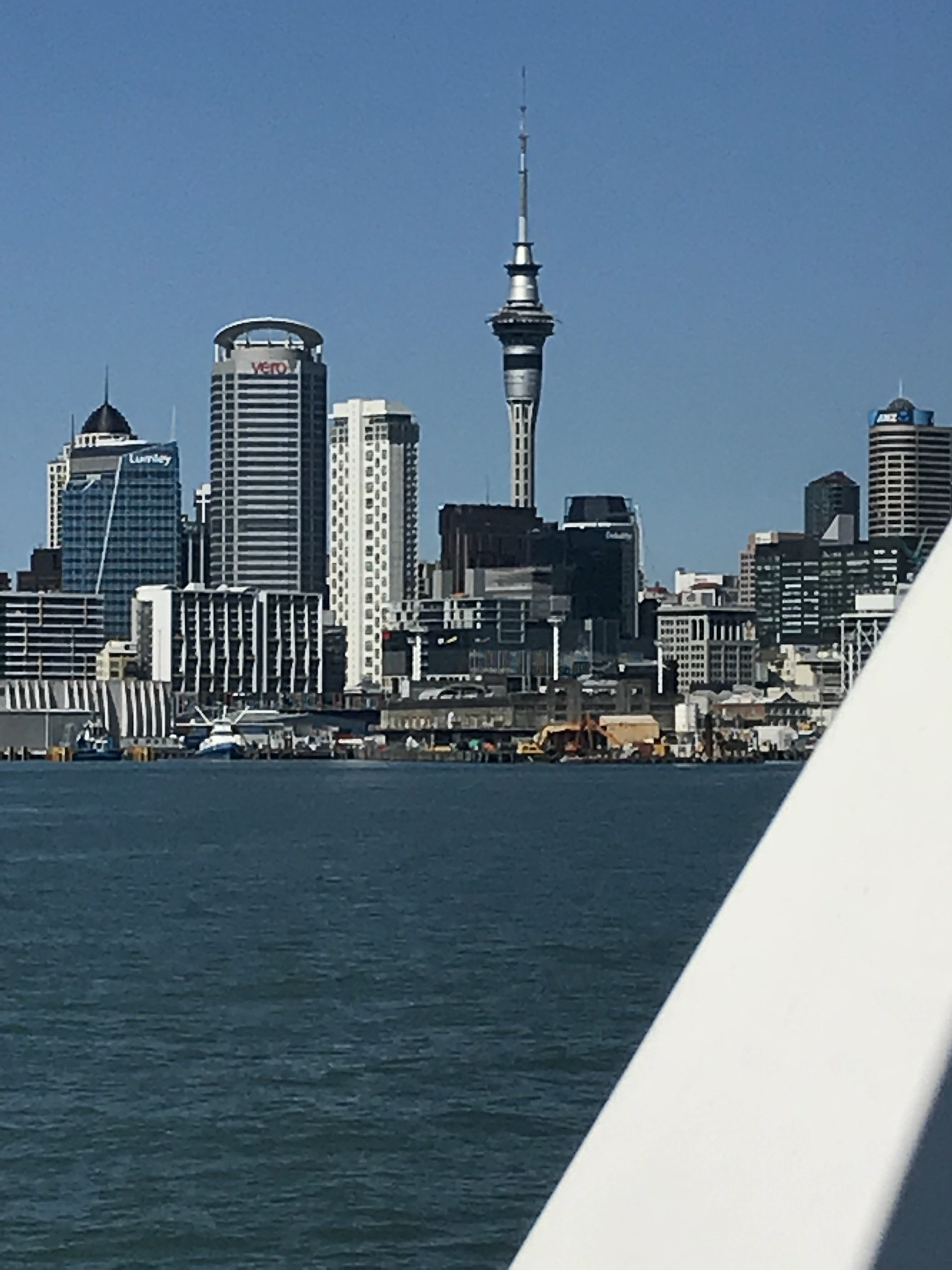
08 Dec TIO NZ: Auckland & Waiheke
Florence, Italy is a long way in time and distance from modern-day Auckland, New Zealand, but a unique show up now (through January 2018) at the Auckland Tio o Tamaki Art Gallery provides at least a temporary bridge.
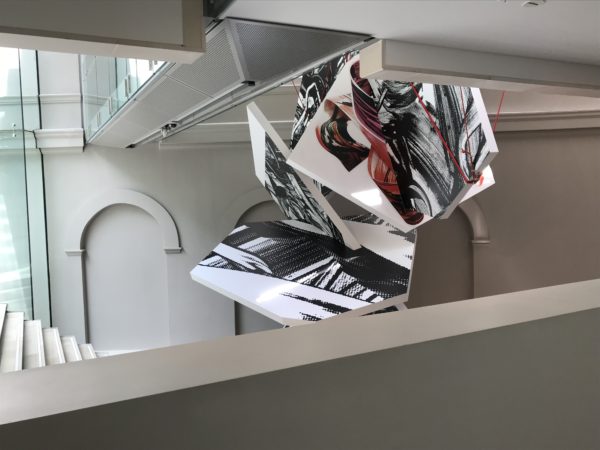
Auckland Art Gallery, “Rock Drop,” by Clint Viebrock
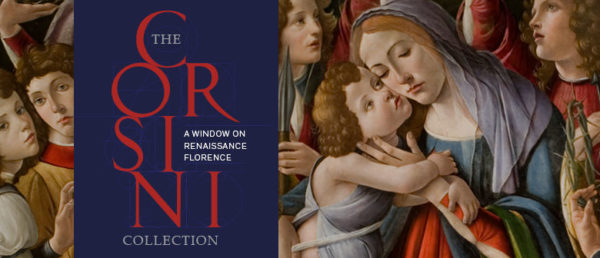
Leave a mark on the world over nine centuries of history in trade, finance, politics, religion, diplomacy, and agriculture. That was, according to online sources, the unspoken duty of the Corsini family and a mandate which influenced their daily lives.
The Corsinis were a princely Florentine clan, whose first recorded ancestors rose to wealth as wool merchants in the 13th century. As typical members of the popolo grasso (rich merchants) who ruled Florence during the later European Middle Ages into the Renaissance and decades beyond, they regularly served as priors and ambassadors of the commune.
And big time patrons of the arts.
A blockbuster exhibit of works from the private Corsini collection – mostly Renaissance and Baroque paintings by art world heavies such as Botticelli, Caravaggio, Ghirlandaio, Tintoretto, Anthony van Dyck – works that have never left Italy before, are now on display at the Gallery.
The Gallery’s rooms also house major holdings of New Zealand historic, modern and contemporary art, works that plot a visual history of New Zealand, beginning with the first contact between Māori and European explorers in the 1600s. Outstanding works by Māori and Pacific Island artists are another powerful feature of its holdings. Check out the idealized, soulful, 19th-century portraits of Māori by Gottfried Lindaur and Charles Goldie, the latter plainly influenced by Rembrandt.
International painting, sculpture and print collections connect the Gallery with the world beyond the Pacific. In fact, the diversity of mediums and artistic practices in the Gallery’s collection is impressive and worth a few hours of browsing and learning.
The Auckland Art Gallery was our first cultural stop on our return to the North Island for the last leg of our trip: Auckland, Waiheke Island, Bay of Islands.
Our walkabout that same day also included a trip to the Sky Tower, a 1076-foot, sky-piercing icon that looks more or less like a giant syringe. A high-speed ride to the top rewarded us with views that stretched more than 50 miles.
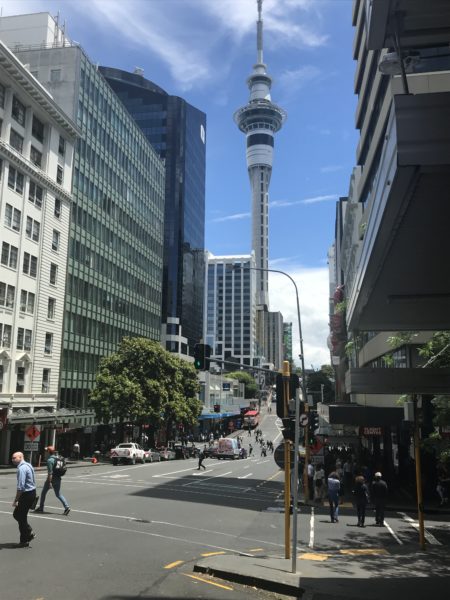
Sky Tower from Victoria Street, Clint Viebrock
From the Sky Tower, we visited the wharf and walked along Auckland’s waterfront.
With the steep up-and-downs of its streets and its picture postcard waterfront the city is a remix of San Francisco and Seattle.
At the end of Parnell Road, just past the impressive Anglican Cathedral, is the entrance to the Auckland Domain, a 185-foot stretch of green built on a volcano. It is the city’s oldest park.
We hiked (about 35 minutes from our hotel) through the Domain to the Auckland War Memorial Museum, a regal structure that lords it over the sprawling verdure of the Domain.
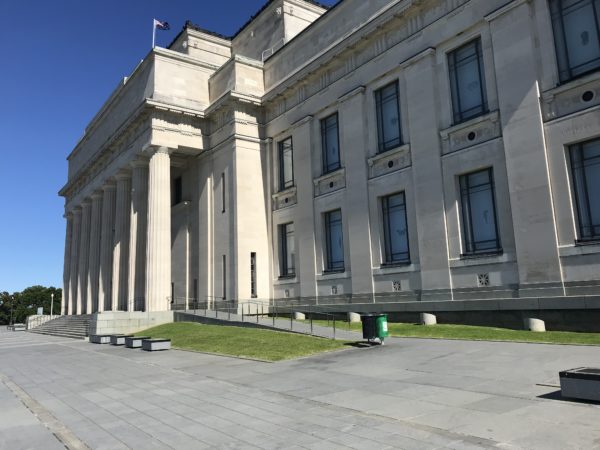
Aukland Museum, by Clint Viebrock
The museum’s name is a misnomer: the institution is not simply devoted to the artifacts of war, though the structure was put up in 1929 as memorial to soldiers who died in WWI. And its 3rd floor does include a very worthwhile digital social space where visitors can share and contribute to the records of those who served for Aotearoa New Zealand. (For more on that, including Gallipoli, go here.)
The Museum also houses what has to be one of the world’s finest displays of Māori and Polynesian cultures. A highlight is the 113-foot-long waka or sacred canoe, carved in 1836 from a single giant totara tree. The vessel sat 100 warriors.
Auckland is one of very few cities in the world to be built on an active volcanic field. Yes, active. Volcanoes have been erupting in the region every few thousand years for the past 250,000 years.
A highly interactive natural history exhibition at the Museum gave us a walk through deep sea black smokers that are volcanos, also a grandstand as-live view of a volcanic eruption in the Auckland harbor. You sit in a room and experience the effects of a blast. Dogs bark. Talking Heads disappear from your TV screen which goes black – hopefully not in the middle of whatever you are streaming on Netflix. And, as the earth shakes, rattles and rolls under your feet, you watch lava flow in your general direction.
But there is no lava shower and you do get to leave – unlike the cast figure of a victim on display from the eruption of Vesuvius in 79 AD.
Another of the Museum’s remarkable exhibits is a reconstruction of 10-foot-tall female Moa bird. Built in 1913, the flightless giant tells a unique (and ultimately tragic) evolutionary tale of living in paradise with no predators until the first wave of humans, the Māori, arrive and hunt her species to extinction.
Thanks to some great intel from our host Richard at The Dairy in Queenstown, we made a trip (with two friends from Telluride, who met us in the city) just out of town to the Waitakere Ranges Regional Park, a vast, unspoiled area of regenerating rainforest and a wild coastline. The Park is tricked out with velvety black sand beaches, among them, Piha, a surfer’s paradise and favorite of weekenders and others, like us, in the know.
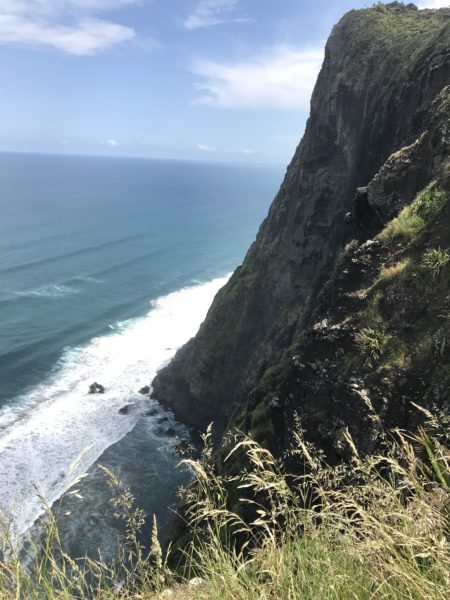
Coastline near Piha, by Clint Viebrock
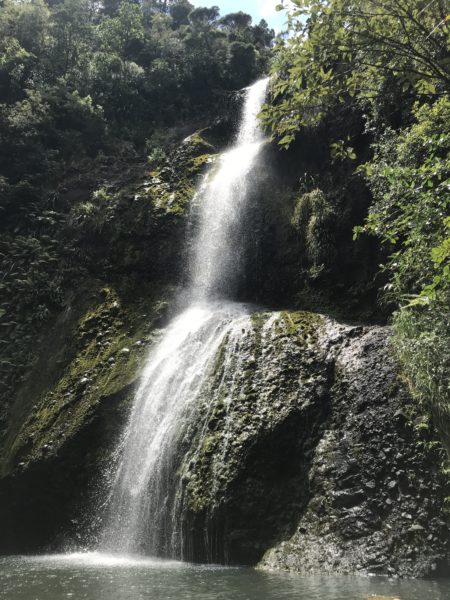
In the park, we scrambled up a mountain, once the site of a Māori settlement, walked on the beaches and along the coast line and visited two spectacular waterfalls: Karekare, where Jane Campion’s “The Piano,” (a Telluride Film Fest premiere and multi-Oscar winner in 1994) was filmed; and Kitekite, near the Piha beach and an easy-ish 45-minute tramp to the spectacular, 131-foot stepped cascade.
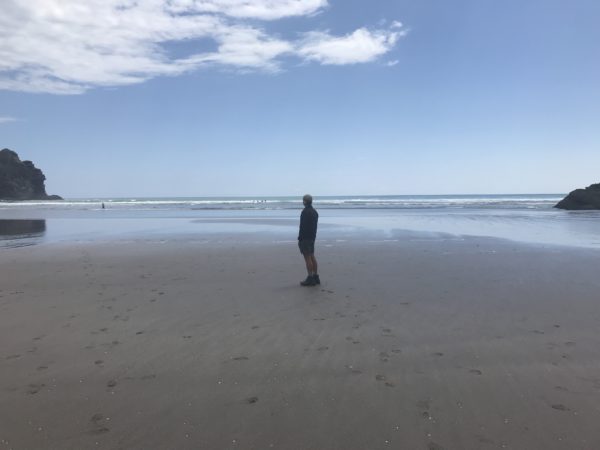
A day trip to Rangitoto:
Rangitoto literally means “sky blood.” Early European settlers speculated the handle was evidence of an eyewitness account of its eruption.
In reality, the meaning of the name is not volcanic.
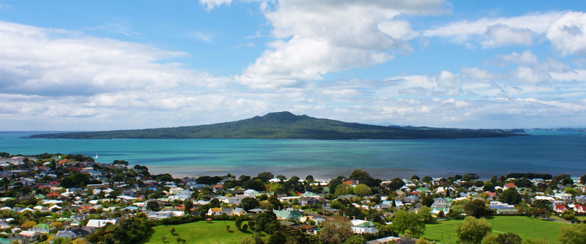
The fullest expression of Rangitoto is “Te Rangi i totongia te ihu a Tame-te-kapua,” Māori for “The day the blood of Tama-te-kapua’s nose flowed.” The site was so named in memory of an ancient battle between the Tainui people and their Te Arawa rivals.
Tama-te-kapua, the famous captain of the Te Arawa canoe, was injured, and his people defeated, leaving the island and Tamaki Makau Rau (the Auckland area) as the territory of Tainui-descended tribes for many centuries.
According to Tama-te-kapua’s descendants, the Ngati Tai, Rangitoto came into being as the result of a legendary domestic dispute on the North Shore.
A giant couple lived with their slave on a mountain that stood where Lake Pupuke is today. The couple became so engrossed in a blazing row that they let their household fire go out. When they noticed, they cursed the fire goddess Mahuika, who called on Mataoho, the local god associated with volcanoes, to teach them a lesson. He obliged by destroying their home with the explosive eruption of Lake Pupuke, and imprisoning the couple and their slave in the triple peak of a new mountain out to sea – Rangitoto.
The day our two friends made the trip to the island, we decided to take a time out. We had already had the ultimate volcano experience on either island, the day we explored the region’s only active volcano, White Island, but for most tourists, a trip to Rangitoto is a must.
Here is the down-low from one of our friends:
“It is a short, half-hour ferry ride from the Auckland wharf to the volcanic island, but Rangitoto might be on another planet.
The youngest of Auckland’s 48 volcanoes (all within 12.4 km of city centre), Rangitoto erupted just 600 years ago and still retains a harsh lava landscape under a cloak of lush vegetation.
Take the hour-long walk to the summit for a wonderful 360-degree view of Auckland’s busy harbor and other picturesque islands. Circle the steep, conical crater and explore the lava caves. Descend the far side towards the McKenzie Lighthouse for a lazy beach interlude and walk back along the coast passing the historic “bachs” or cabins that were once inholdings.
Caveat emptor: the last boat back to the mainland leaves at 5 p.m. Also, because of its many native trees and plants – and a local icon – Rangitoto is closely maintained as a national park. However, it has no – repeat no – services or facilities except a few public toilets. Bring along water, lunch (required to be in plastic containers), sunscreen, a flashlight, whatever you might need for a long, lovely day.”
We stayed “home” on Saturday, December 1, to work after days of driving, hiking, generally touring. However, late in the afternoon, not long before closing, Clint took a bit of time to race through the New Zealand Maritime Museum. It was, after all, a beautiful late spring day, so he figured it would be good to be outside after hours of catching up on our digital life.
Weekends on the Auckland waterfront, the bars are jumping and this particular Saturday, people were out enjoying the sunny day, so the Museum was nearly empty, which aided Clint’s mad dash through the displays.
There are Māori watercraft as well as models of their European counterparts, clearly illustrating the light and fast technology of the former.
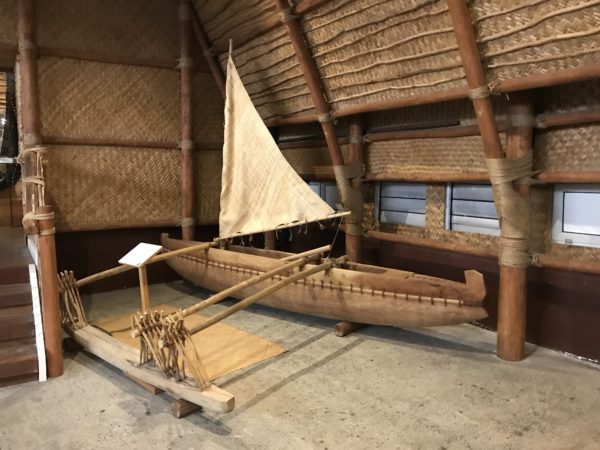
Outrigger Canoe, by Clint Viebrock
Clint reported there are dioramas and graphic displays of many phases of sea commerce, old and not-so-old. And to top it off, outside on a pedestal is KZ 1, the giant sloop that changed America’s Cup racing back in 1992.
The Maritime Museum is a must for anyone interested in “…just messing about in boats.”
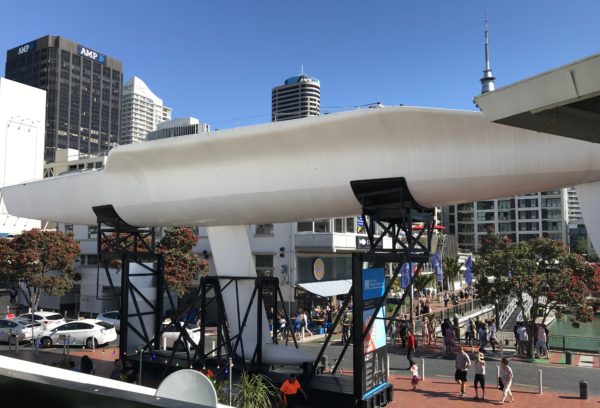
KZ- 1
Where to stay, where to eat in Auckland:
The Hotel De Brett is the cat’s meow, a boutique property that is an eight-minute walk from Sky Tower, about five minutes to the Auckland Art Gallery and 10 minutes from the styling Britomart, a mini-mall that showcases a few top names from New Zealand’s growing list of emerging high fashion designers: Karen Walker, Juliette Hogan, Kate Sylvester, Trelise Cooper, World, Zamberi, Deadly Ponies and Kathyrn Wilson.
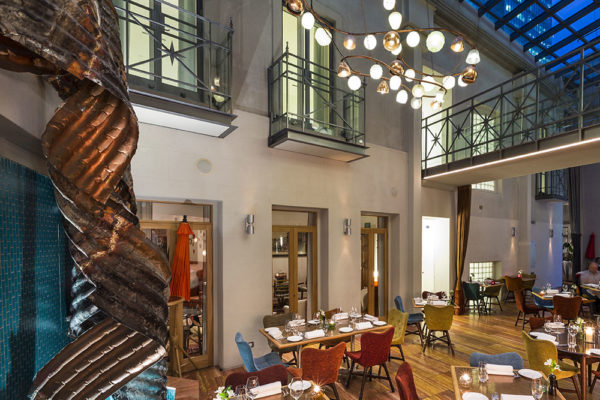
Built as The Commercial Hotel in 1841, what is now De Brett’s was one of Auckland’s first hotels. The structure survived two fires and two rebuilds before the current building was erected in 1925.
Only 25 rooms, all gems. More on its colorful history here.
In addition to the Britomart, just a few doors up from DeBrett’s on High Street, is another great place to shop. Untouched World uses only the highest quality sustainable fabrics, fibers and yarns to create multi-tasking fashions that are easy care and, most importantly, easy on the earth – without sacrificing high style. What’s more, Untouched World is the first, and only, fashion company in the world to be recognized by the UN.
De Brett’s Kitchen features imaginative, contemporary, farm-to-table fresh New Zealand cuisine. Great breakfasts too. Service with a smile. And once we became regulars – just two meals when we first arrived, lunch and dinner, did the trick! – the smiles got broader.
Anywhere in the wharf area for oysters. We sampled the goods at Oyster & Chop and Giraffe. Excellent.
For contemporary Indian food in a very colorful part of town, head for Satya. The vibe is funky; the owner, warm and welcoming. And his family has been in the restaurant game for years, so Satya is a legacy (and his grandmother’s name).
Waiheke Island:
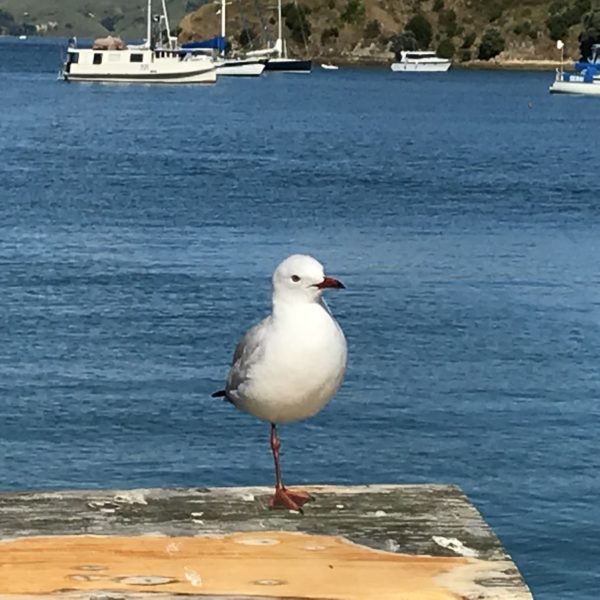
Welcome to Waiheke, by Clint Viebrock
Brett Barclay is living the dream. An unrepentant traveler – 120 countries to date and counting – he follows his bliss straight to the bank. Brett’s day job is owning and operating a travel agency: World Journeys.
It was Brett who arranged the trip to Se Asia that included a cruise on the Mekong, where we met the Kiwi friends who invited us to stay with them in Tauranga, the first stop on our month-long New Zealand odyssey.
So to close the circle, Brett suggested we visit him at his weekend home on the paradise island of Waiheke.
Waiheke might be described as the love child of Never Neverland and the Hamptons.
Once upon a time, Waiheke was a sleepy summer vacation retreat and hippie haven, modest beach houses dotting its edges. Once the place could only be reached by a long, slow ride on a ferry that did not care about Monday morning. But a fast, commuter ferry (half hour) changed all that. Sounds a bit like home?
Today Waiheke is home to about 35 vineyards, many the passion projects of their owners. Dwell-stye homes owned by the 1 percenters rub shoulders with modest weekend escapes.
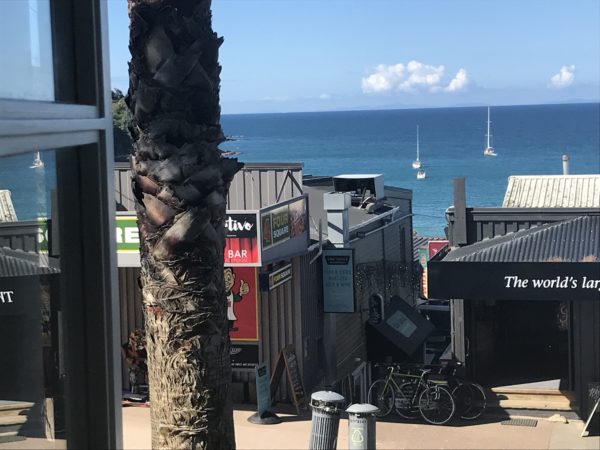
Downtown Oneroa from the Oyster Inn, by Clint Viebrock
From the ferry landing at Matiatia Wharf , it is a short trip to the small town of Oneroa, the island’s hub, with its shops, cafés, bars – and our tiny hotel (only 3 rooms), the effortlessly lux Oyster Inn, a boutique accommodation Brett had suggested for our home base and whirlwind tour.
At the Inn, our charming, (albeit sardonic) host Perry suggested the most efficient way to tour the island in our allocated 24 hours was to rent a car for the day.
With wheels, on the too-short trip we managed a stop at Man O’War Vineyards, a remote property (as in it took us about 1.5 hours to drive there from our hotel) on the northeastern end of the island, where we sipped wine and had a long, leisurely, al fresco lunch after short hike around the nearby Stony Batter Historic Reserve, the site of a WWII encampment, where unique fluted boulders (and sheep) dot the landscape.
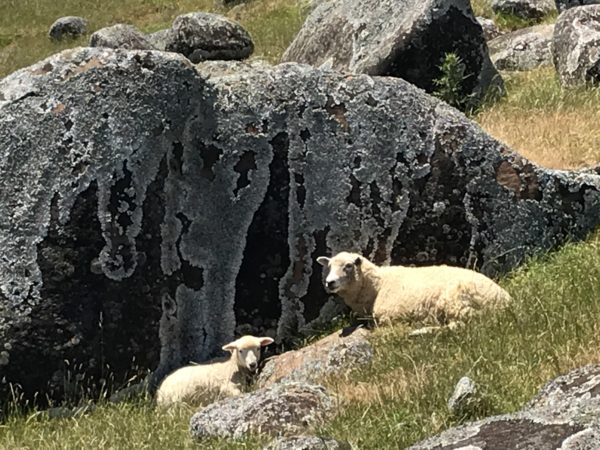
Locals and Rocks
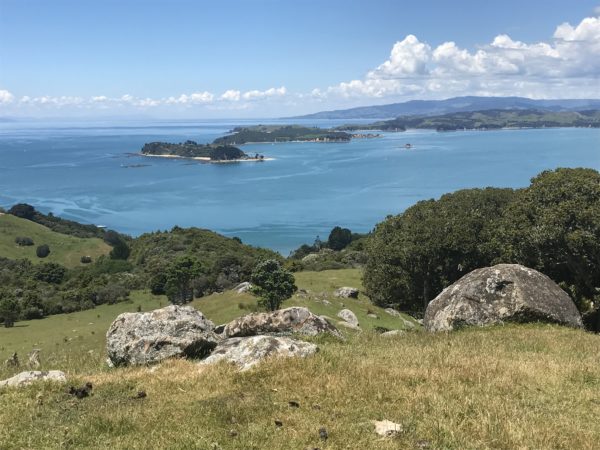
Peacock Sky Vineyard is located in the centre of Waiheke, so we stopped our our way back to the Inn.The vineyard shares its verdant home with a flock of wild peacocks, the source of the name.
Its tasting room and restaurant are in a secluded setting surrounded by lush native bush. There we sampled four distinctive wines: a chardonnay, a rosé, a merlot, and the vineyard’s signature Bordeaux blend, paired respectively with tastes of a laksa soup, jackfruit, a beef meatball and chocolate.
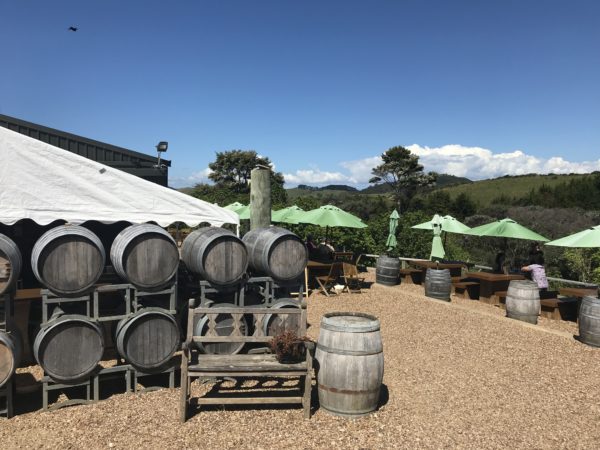
Peacock Sky Winery
Back at the Oyster Inn we sat on the verandah of the hotel’s terrific restaurant, where Brett and the daughter of our friends from Tauranga met us for a recap of the day – and more wine, bien sûr, served with a side of local history.
Dinner later featured unfussy coastal classics, perfect for the seaside setting.
Waiheke is a must on any trip to Auckland – but plan to spend more than 24 hours to explore other vineyards and beaches and troll its art galleries and boutiques.
Among the wineries, Perry suggested Te Motu and Jurassic Ridge should not be missed.
Also the sandy beach a few short steps from the Oyster Inn.
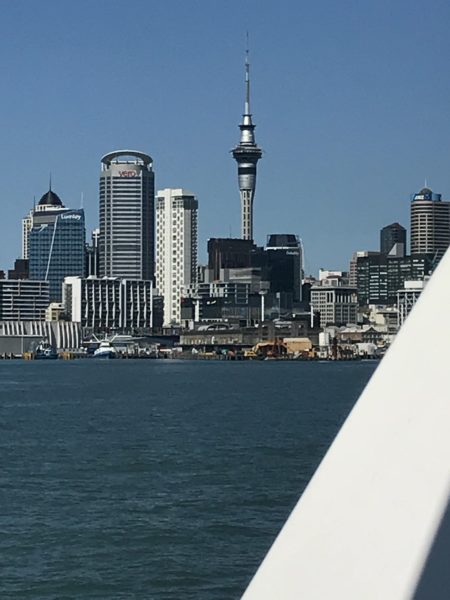
Returning to Auckland, by Clint Viebrock


Sorry, the comment form is closed at this time.